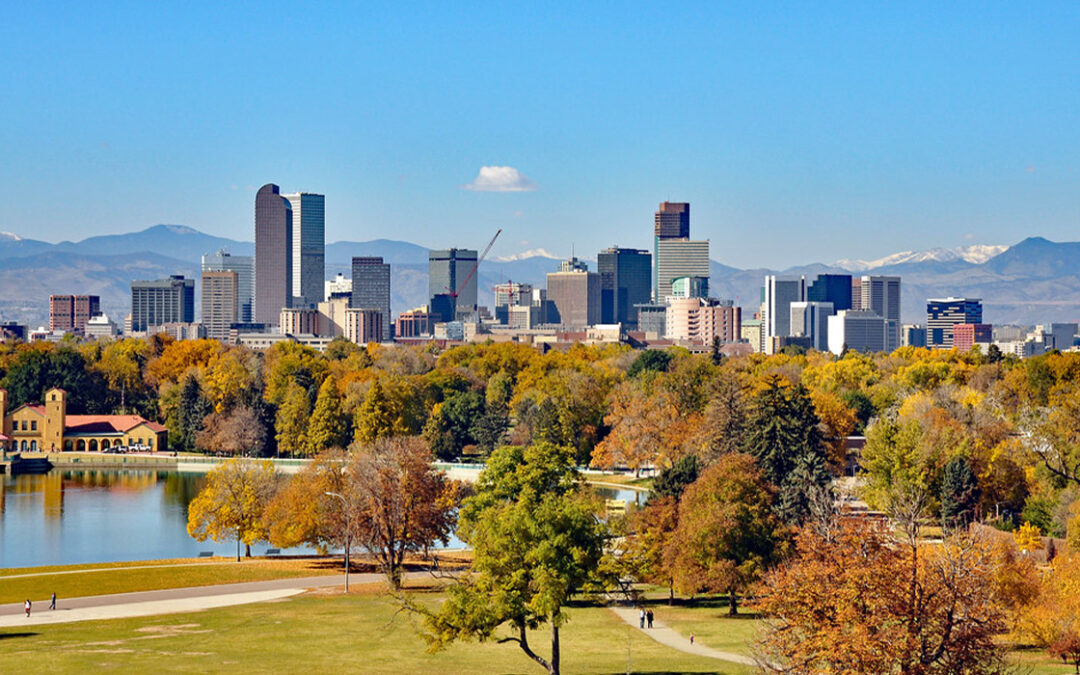
by Jennifer O'Connell | Oct 16, 2019 | Auto Accident, Colorado, Kentucky, Tennessee, Uncategorized
Climate Change: A Total Hottie
Let’s assume for a moment that the hoax of climate change is real. Now that we’ve gotten over that little speedbump, raise your hand if you’ve slogged through an airport recently, searching for the least crowded bar serving $14 well drinks, all thanks to Mother Nature’s insistence that your flight be delayed or canceled. Many of us know this tale so well that it’s beginning to feel like Groundhogs Day, but without the benefit of having Bill Murray join us in our plight… not that he’d be exempt. In fact, just this year there have been so many delays and cancellations due to weather that finding an estimated number just for DIA puts Google to the test. It makes sense to most of us that two bomb cyclones in a single year may put a damper on some snow-birding south or snowboarding west. But summer can be just as brutal. “Heat wave” has become common vernacular in parts of the country where the term was previously used for body temps and songs on that dusty vinyl rescued from your mom’s attic, not for transportation. What does 1960’s Motown have to do with travel and climate change? Everything. According to a 2017 article in Forbes magazine, Bombardier CRJ’s can only withstand 118 degrees and larger Boeing jets can’t get much past 125 in order to operate properly. Why? Remember in 3rd grade when you were just learning to write those “check yes or no” notes to your crush while your teacher was desperately trying to teach you how to get an egg into a 2-Liter using just a match? Call her and thank her for explaining to the 8-year-old you why the… ahem… more distinguished version of yourself should start exploring alternatives to air travel. Or call the National Weather Service to inquire as to the accuracy of their early-August report showing near-nationwide heatwaves with temperatures inching closer to forced “stay-cations.”
Road Trip!
Think you’ll out-smart nature and finally see Route 66 from start to finish? Au contraire! In July of this year, the National Weather Service warned of heat waves one week and cold fronts with flash flooding and damaging winds the next. So if the buckled roads don’t squelch your determination, the rushing waters of the Plains States just might. Angry at our wrath-bearing planet? Watch that finger-pointing. All that air transportation we’ve been suffering cancellations is really turn-about finally becoming fair play, according to the New York Times. A June article written by Andy Newman cited scientific conclusions such this: One 2,500-mile passenger’s contribution to emissions melts 32 square feet of Arctic summer sea ice. And a 600-mile drive to an Airbnb with a peaceful spa tub might as well be a giant flame-thrower to the Arctic, melting 90 square feet of ice per person. That’s a chunk the size of our beloved Jeep Unlimiteds. Want to get especially gruesome? A scientist from my Alma mater, University of Tennessee – where the rumor of dead bodies under Neyland Stadium and a body farm just across the river is true – estimated that the average American generates three times the global average of carbon dioxide annually, a lethal dosage to the third rock we live atop.
Cruisin’
Alright, then. No road trips, no sky miles. Let’s all just charge the gangway of the closest cruise ship and take “King of the World” selfies with Celine songs in the background and shuffleboard games taking on SEC vs Big Ten-esque rivalries. That should solve both our transportation and climate problems with one shuffle of the board… is that what it’s called? Except… according to the International Council on Clean Transportation, the most efficient ships sailing the seven seas emit 3 to 4 times more carbon dioxide than those pesky jets. And if you’re still set on shopping at the dockside markets of Jamaica, keep your face mask handy while on board. Particulate counts on cruise ships are comparable to – or worse than – the air quality in Beijing. Alas, how can we safely see the planet and save it at the same time? It seems the experts agree: prioritize, protest, and offset. Prioritize your travel, opting for the less-emitting road trip over the flight, the flight over the cruise. And before kicking those tires and lighting those fires, toss some cash towards offsetting sites to make up for your contribution to polar bear homelessness. Throw your money into methane emanations instead of into the pockets of the worst offenders. It’s the eco-version of “Be kind. Rewind.”

by Jennifer O'Connell | Apr 19, 2019 | Colorado, Uncategorized
The Never-Changing Caps
No one likes to think about the worst. But in our role as officers of the court, we are tasked with doing just that. All too often, we represent the families of people who have passed due to the negligence of another: families of injured children or working parents who will have years of recovery ahead of them due to someone else’s negligent actions. And we continue to push back against the caps put into place by the state legislature on what those families are allowed to collect. Often when the worst happens, the settlement or judgment against the party at fault serves as a life insurance policy from the decedent to their loved ones. This is because many do not have life insurance coverage at all, or if they do, it amounts to $100,000 or less. But when the family is left with numerous medical bills, estate costs, funeral expenses, house payments, and loss of dual income that helped support the household, $100,000 does not go very far, if it covers the necessities at all.
The state legislature in Colorado saw fit to limit the amount these grieving families could be compensated through legal means from the at-fault party. Years ago, the cap on damages was limited to $468,010 in non-economic damages for a wrongful death claim. That means that after the direct medical bills related to the death are paid, families may receive a maximum of $468,010 to help them cover the costs and expenses above. Period. For life. There is no going back and asking for more. There is no fund from which to draw if times get tough and there is nothing left. What if the family of the deceased has no one else to work and support the household? What if the deceased was a single mother or father of several children who have no one else to support them? And after the payment of all death, funeral, medical, and household costs, little is left to support these children through to adulthood, to keep up with house payments or school needs and college funds? Should these children be disallowed to seek their education as planned because someone else negligently caused the death of their parent? Should they become wards of the state? Should they go to another family member who is already living paycheck to paycheck with very little to ease the burden? Further, this amount has not changed in many years, meaning it has not kept up with inflation.
Finally, and thankfully, the state government has paid attention to the cries of the victims of negligent acts. Governor Polis signed into law a new bill that not only raises the various caps by approximately $20,000 each, keeping in line with inflation. In addition, instead of the old ways of checking in over a decade later to ensure the caps are keeping up, the caps will be proverbially babysat every two years. Problem solved? Not really. From our perspective of working with these families day in and day out, the inflation bump helps, but when you are faced with the prospect of having very little to support your family with the loss of your spouse, or being paralyzed and requiring medical treatment and an inability to work and provide for your family, a mere few hundred thousand from the party that put you in that position hardly seems adequate. Even if a jury awards a plaintiff millions of dollars in non-economic damages, all they will see is the exact amount of the cap.
For reference, here is where they stand and where they will be once this law goes into effect:
- Current non-economic damages cap — $468,010 Anticipated new cap adjusted for inflation $584,210
- Current dram shop/social host cap — $280,810 Anticipated new cap adjusted for inflation $350,550
- Current wrongful death cap — $468,010 Anticipated new cap adjusted for inflation $584,210
- Current solatium cap — $87,210 Anticipated new cap adjusted for inflation $108,840
While there are legal means to, as we say in the biz, “bust the cap,” this is not an easy concept and there are extremely limited and narrow exceptions that must be followed so precisely that many fail to qualify. We wholeheartedly understand the community’s desire for some control over liability and to keep a handle on litigation results. However, we must put closer consideration to the lives that are left behind when horror strikes. No amount of money will replace a loved one or give a human being back their dignity and use of their limbs. But adequate compensation to get them through the next years of their life, help keep a roof over their home, food in their kid’s bellies, and heat running through the ducts while they try to get back on their feet… that we can do. If you find yourself sitting on a jury evaluating the damages for a catastrophic injury, please keep in mind these things we have discussed today. And do not limit your verdict to these caps. If you see fit to award the plaintiff more than that legislatures meager attempts at adequate compensation, write it down on that line.
Allow the team fighting for the injured some leeway to petition for a cap bust. And next time you send a letter or make a phone call to your representatives, remember to ask them exactly where these numbers came from and why they feel that politicians know more than the jury, who has sat through perhaps weeks of documentation of this person’s future life and needs, about the value of that. Do not let elected officials usurp the power of a jury, one of the oldest and most important civic duties in our country’s history. Finally, if you or a loved one find yourself in a time of loss or catastrophic injury, please call an attorney right away. Do not try to navigate these complexities on your own. You need to focus on the next steps for your family while we focus on taking on the negligent party and the legislature’s regulations simultaneously so we can get you set as close to right as possible when the dust settled. We are happy to answer any questions free of charge to get you moving in the right direction. Come read about what we have been able to do so far and call or email us to see how we can help you in the future.

by Jennifer O'Connell | Mar 20, 2019 | Colorado, Uncategorized
How Will They Tackle Denver’s Growth?
Denver is growing. This we know. But did you know that the city population is projected to hit 849,000 by 2040? That’s an increase of over 150,000.
We hear the collective groans from the natives and the worries of the morning and afternoon commuters. So do city officials. With an eye to growth, city planners are focused on the following questions:
- How do we ensure adequate affordable housing and minimize displacement?
- How vehicle-centric should our city be?
- How do we ensure equitable access to high-quality parks and recreational programming?
- How do we maximize mobility for all?
Denver City officials have spent the last several years developing strategies to address development of better transit routes, more pedestrian-friendly roads, and multi-modal-supportive travel plans. The result is five distinct measures to tackled all of the above. Each measure it outlined below. Click on the plan title for the full plan details and costs from the Denver City Government.
1. Comprehensive Plan 2040
- 20-year vision of Future Denver
- Aims to address climate action, inclusive housing, multi-modal transport, and connective accessibility.
- 50+ goals for what Denver will look like in 2040
- Housing: access to basic services for all Denver residents, across a range of income levels; development of affordable housing for the lower socio-economic demographics; preserve existing affordable housing; reduce involuntary displacement of residents and businesses; improve education and increase educational equity.
- Neighborhood Development: increase quality neighborhood urban design; preserve authenticity of neighborhood history, architecture, and culture; create and preserve parks and public spaces; empower residents into city government activity and leadership positions; support the arts; conduct neighborhood planning; increase safety.
- Connections: expend the multi-modal transit systems; increase safety on public transit; increase public right-of-ways; increase multi-modal access in vulnerable areas; develop high-quality transit network; build and maintain bicycle and pedestrian networks; expand funding for multi-modal infrastructure; close the loop on transit connections.
- Economics: improve access to opportunity; emphasize diversity in economics; support local business; ensure a competitive workforce; strengthen Denver as a global city; increase youth access to education and the global economy; enhance economic vitality of the arts; stimulate innovation; promote food business.
- Environment: mitigate climate impact and reduce emissions; prepare for and adapt to climate change; conserve water and use efficiently; integrate storm-water; enhance and protect South Platte River; protect and expand green infrastructure; reduce and conserve waste; protect and improve air quality; promote responsible food systems; cultivate emergency planning.
- Health: enhance environments that support physical activity and health; provide more parks and recreation areas; ensure affordable nutrition to all neighborhoods; increase health services; incorporate health analysis into city policies.
2. Blueprint Denver
- Land use and transportation plan for growing city.
- Focuses on inclusiveness and maintenance of neighborhood identity within the city.
- Aims to reduce vulnerability through displacement as development increases.
- Increases access to quality-of-life amenities, health, and education within each neighborhood.
- Provides a better and more inclusive range of housing and employment options in all neighborhoods.
- Make all neighborhoods “complete,” in the sense that all include jobs, home, schools, health, and leisure activities.
3. Game Plan for a Healthy City
- Designed to address growth, limited water resources, and climate change.
- Promotes easy access to parks and open spaces, establishes more city parks and recreational programs.
- Increase resilience and environmental sustainability of city parks.
- Ensure equal distribution of parks and recreational programs to all neighborhoods.
- Manage economic resources to ensure long-term health of parks and recreation systems.
- Preserve neighborhood culture within the parks.
4. Denver Moves: Transit
- Provides more reliable and safe mobility options as the city grows.
- Offers more connectivity to key destinations and between neighborhoods.
- Includes plans for the first-ever citywide transit plan.
- Recognition that 1 in 4 residents in 2040 will be between the ages of 18 and 34, focusing transportation modes for the needs of this demographic.
- Reduce single-occupant vehicle commuters and increase bicycle and pedestrian commutes.
- Protects the climate and reduces greenhouse gas emissions.
- Eliminates barriers and increases access to smart technology and related mobility services.
5. Denver Moves: Pedestrians & Trails
- City-wide plan for completing and improving sidewalks, street crossings, and trails.
- Improves connections near transit.
- Increase wheelchair accessibility and safety.
- Enhance recreational train network, including adding multi-use and single-track trails.
- Make 4-foot sidewalks the city minimum and enhance accessibility to grocery, parks, schools, healthcare centers, and public transit.
- Increase “Tree lawns” between the sidewalk and curb/gutter space.
- Add pedestrian overpasses.
- Improvement of street signals, lighting, and furniture.
- Integrate neighborhood culture into street design.
- These plans were constructed from data review and public input, and they are still in draft format.
Click here for a calendar of public hearings where you can voice your concerns and ideas for the parts of these plans that mean the most to you. Queener Law plans to attend several upcoming community town-halls and public hearings to learn more about these projects. If you have concerns you would like us to voice, contact us

by Jennifer O'Connell | Feb 27, 2019 | Colorado, Uncategorized
Trouble with Taxes? Buy an EV.
Governor Polis’s administration is pushing HB19–159 through the House, extending tax credits for electric vehicles, according to Judith Kohler of The Denver Post. The original bill, set to end in 2021, will presumably be extended to 2025.
There’s a credit for each vehicle size:
- Passenger Electric or Plug-in Hybrids — Starting at $5,000
- Light-to-Heavy-Duty Trucks — Starting between $7–20,000
- Leased Vehicles — $2,500
But act fast! The credits gradually decline over the term of the bill. The good news: all credits are in addition to the already existing federal tax credits ranging from $2,500 to $7,000. According to the Post, the administration’s goal is to reach one million electric vehicles on Colorado roads by 2030. The Colorado Electric Vehicle Plan projects that achieving that goal will serve to rid our skies of several hundred tons of smog-forming pollutants and 3 million tons of greenhouse gases. This initiative comes in conjunction with the move we previously outlined to allocate penalty funds from offending auto-makers like Fiat to the promotion of charging stations across our state, after the manufacturers were found to have been cheating the system with emissions-hiding devices. The hope is that by the time Coloradans make the switch to electric, the state’s infrastructure will be powered up and ready to go. Even before this push, by summer of 2018, the number of Coloradans driving electric-powered vehicles was already up 50% from the same time in 2017, according to the Post.
And Colorado already ranks seventh in the nation for the number of charging stations already available, says the National Renewable Energy Laboratory.
Auto-makers finally seem to be keeping up with the times, with multiple electric trucks hitting the lines, and Jeep’s new Wrangler that boasts an election for an electric motor in conjunction with a turbo-charged 2.0 liter four-cylinder. While one of Colorado’s most popular vehicles won’t be fully electric, the new motor will contribute to the effort as a starter and will make up 71 pound-feet of torque on acceleration, according to Tony Quiroga of Car and Driver. Our truck and SUV-loving state is awaiting the sale of many new EV’s, such as 2020 Rivian R1T, 2020 Volkswagen ID, 2019 Audi E-Tron, 2019 Kia Niro EV, Volvo’s all-electric XC40, and a few others in the luxury category. And as consumer demand increases, it is the hope that more affordable models begin rolling off the presses. Early EV-buyers may have to apply their tax credits to the sticker-prices of their new rides, but as manufacturing and infrastructure catch up to environmental demands, we may just meet the Polis Administration’s goals and play our part in combating greenhouse gases in the near future.
For more of our musings on issues that effect Coloradans, click here. For more about us, click here.




